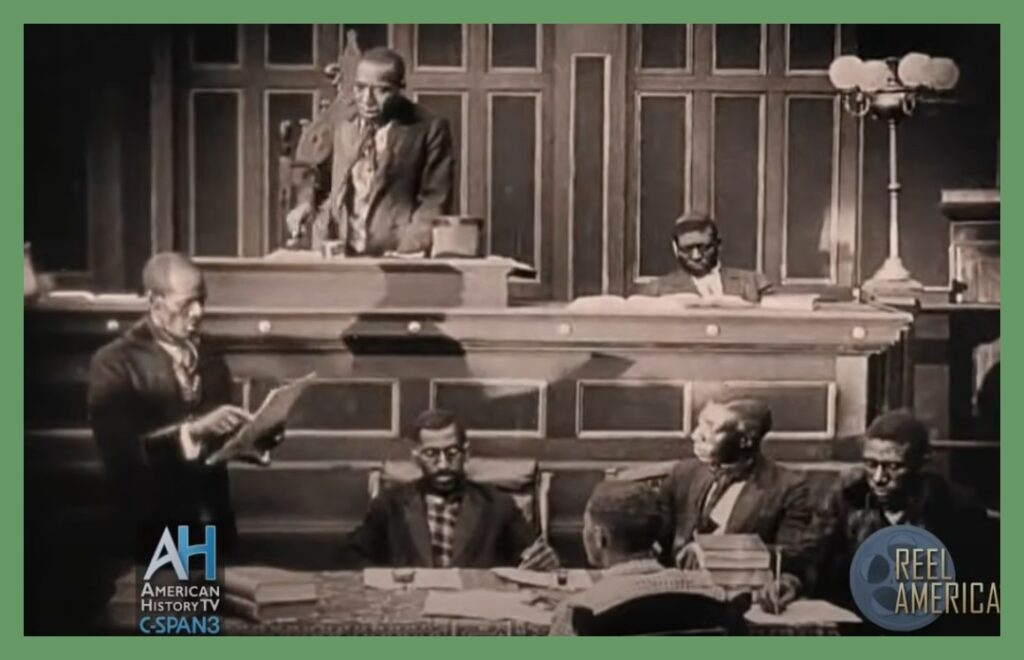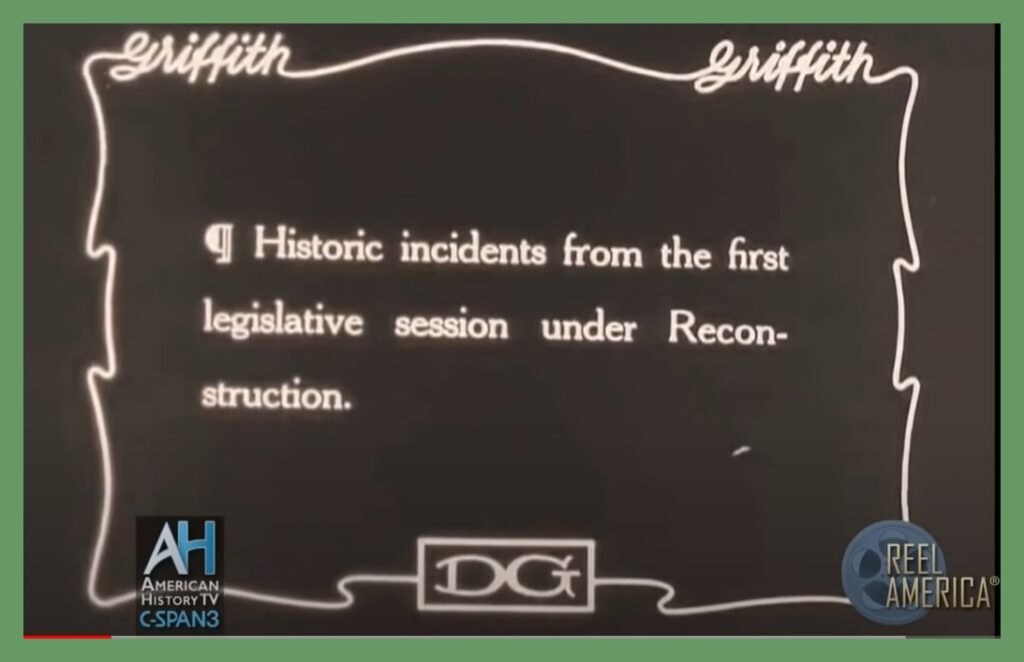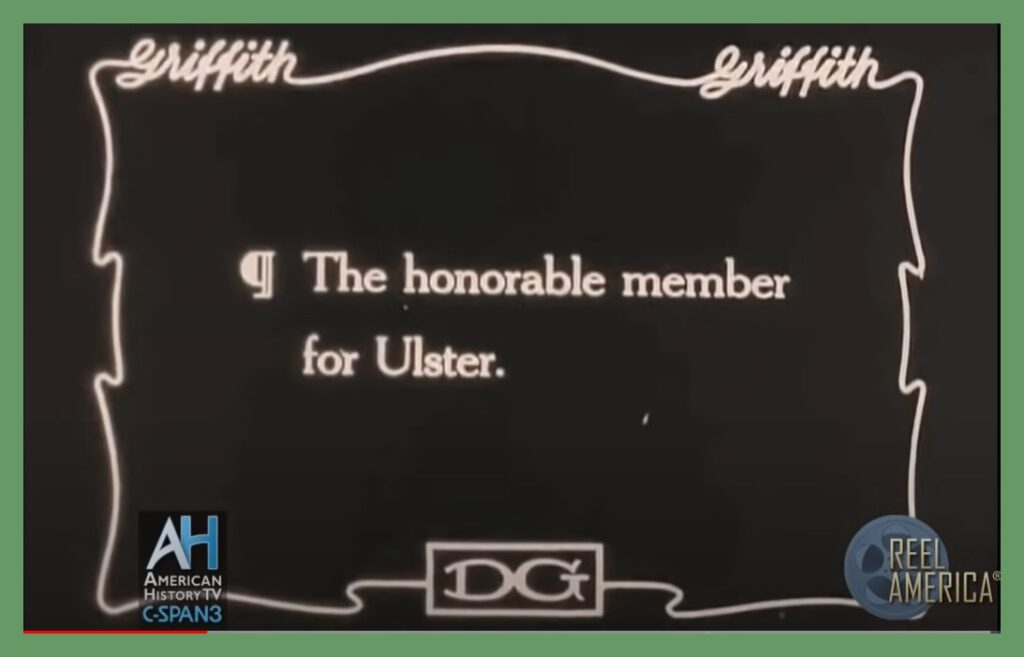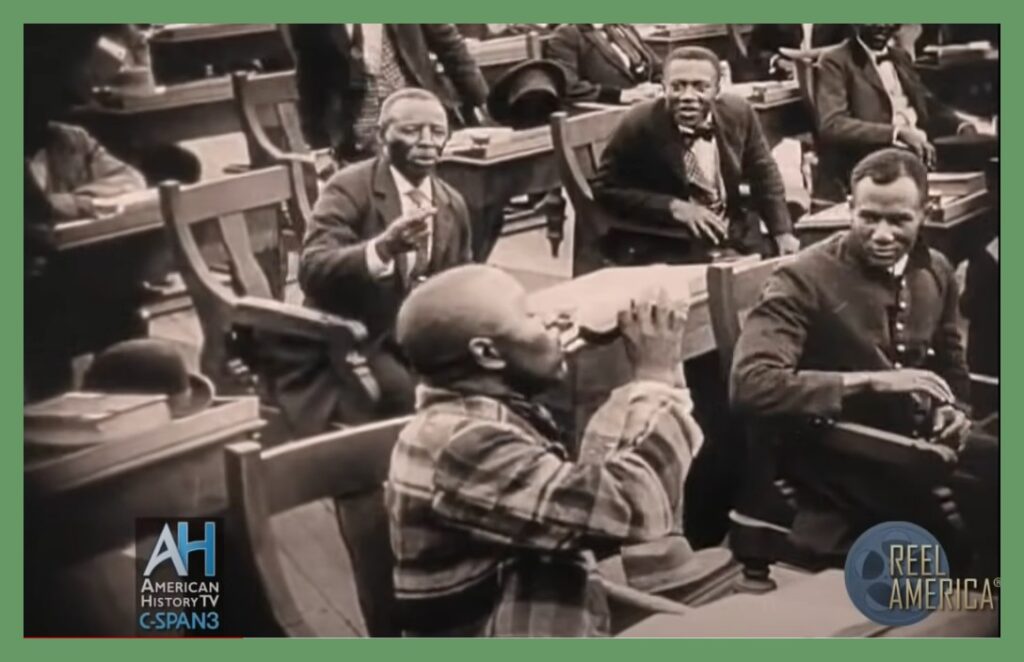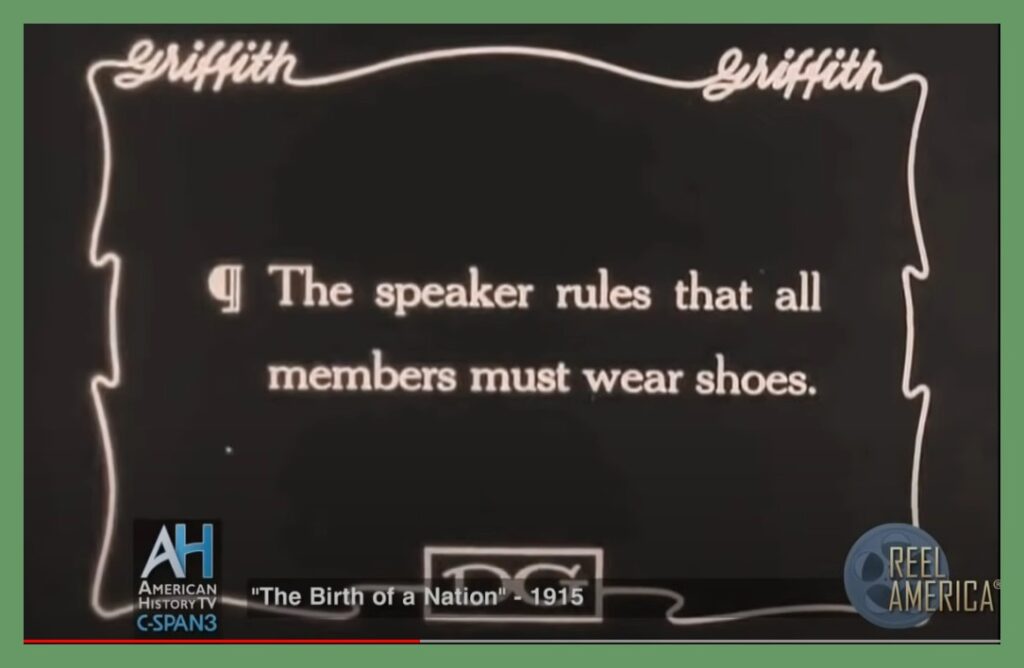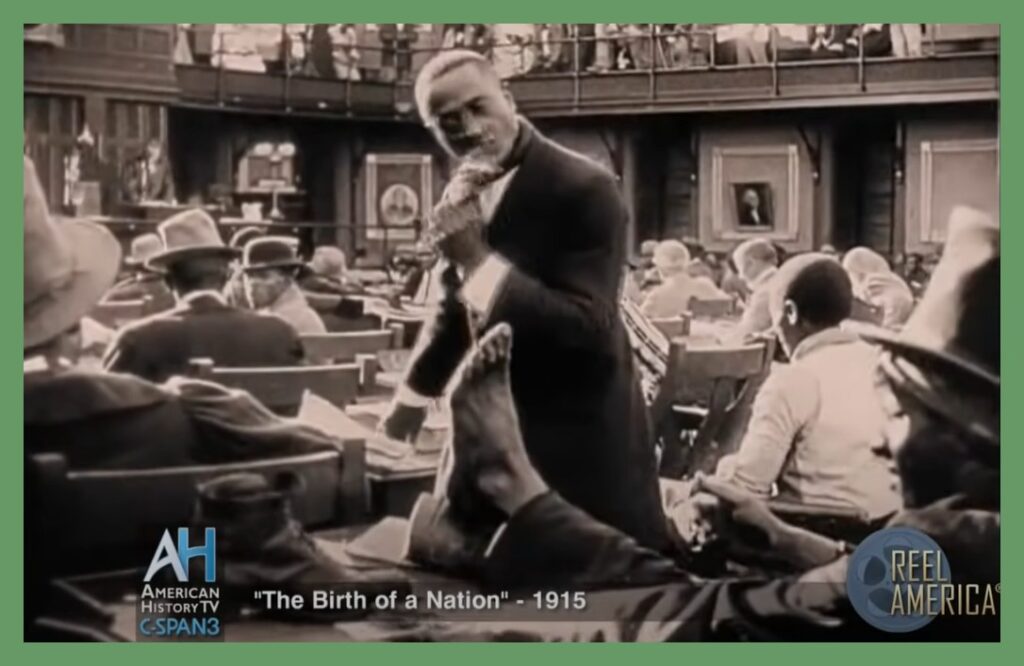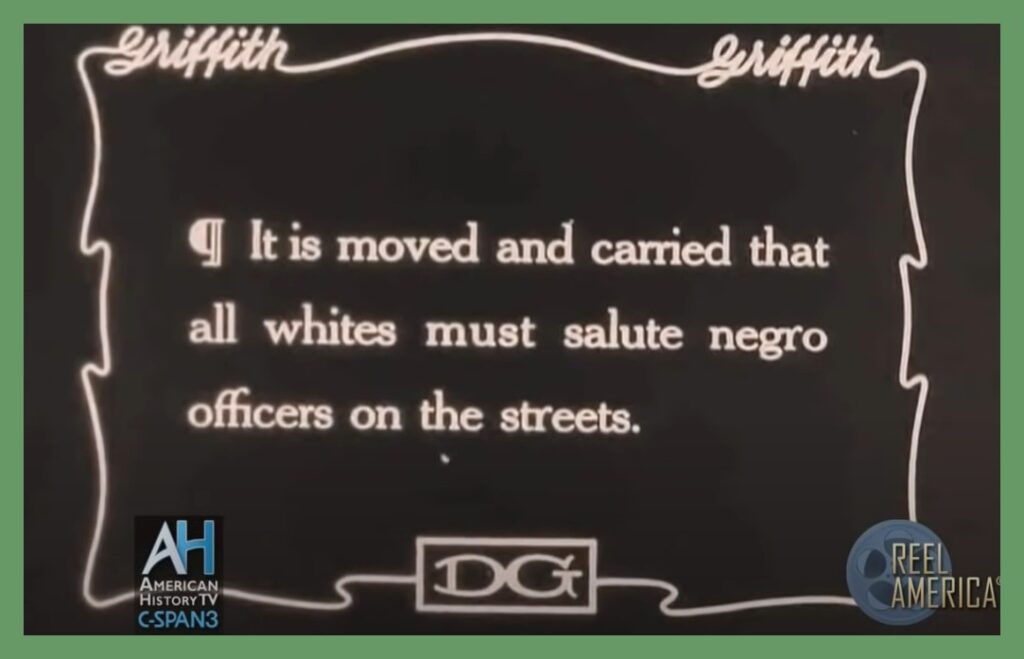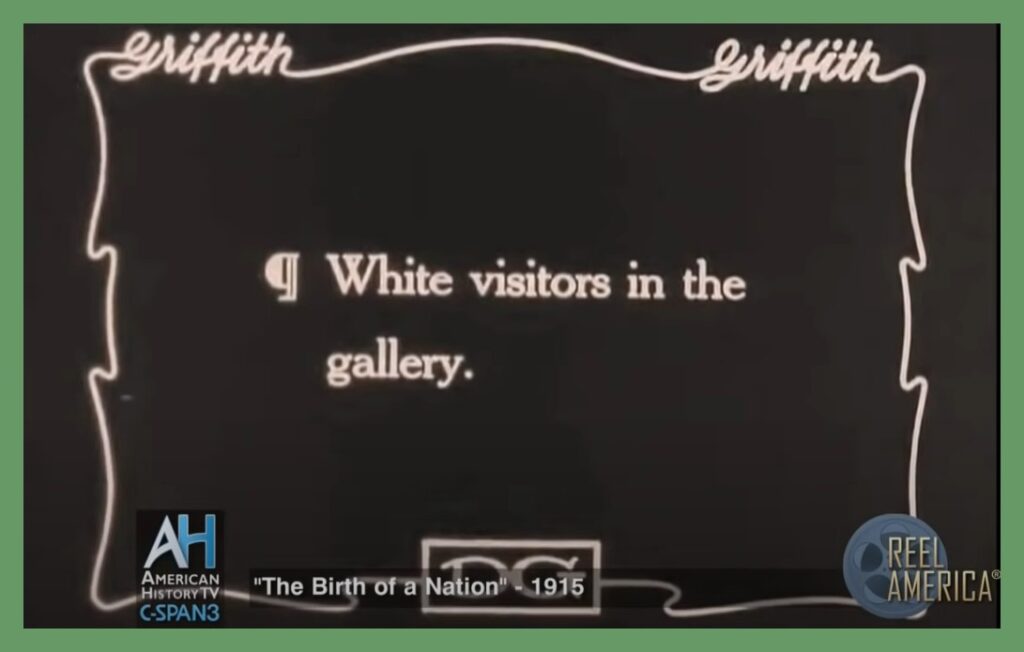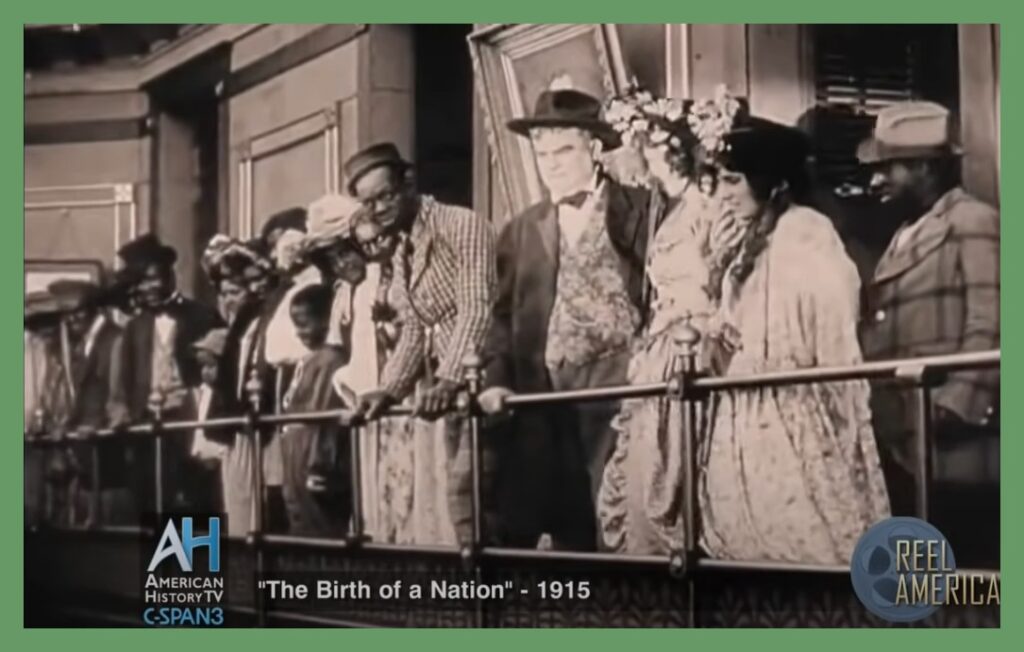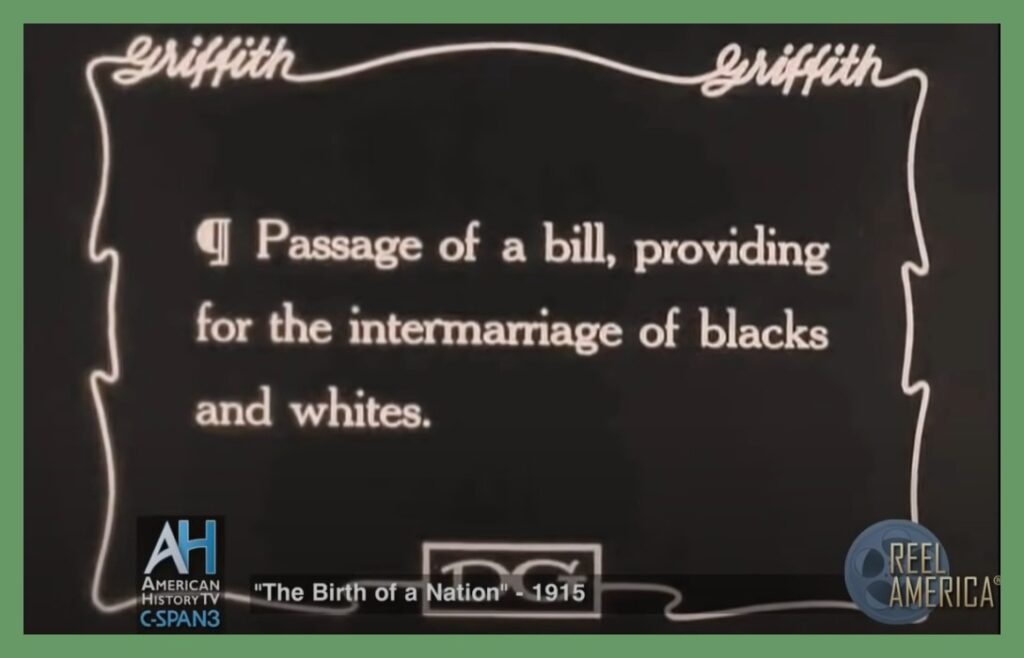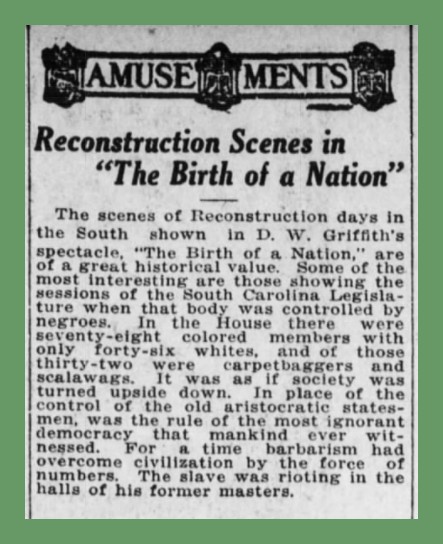A scene from The Birth of a Nation, 1915, depicting the speaker of the South Carolina Legislature and other officers during a Reconstruction session in 1871. The scene was part of a less-than-three-minute segment of the entire film, but it was a major focus of the criticism of the film by African American as well as whites. It also served as one of Griffith’s leading points in justifying the rise of the Ku Klux Klan and the “taking back” of the south. Griffith’s portrayal of the Black legislators as uncouth, drunken, chicken-eating, shoeless men who wanted only to “marry” white women played right into the stereotypes of the times.
Most, if not all of the actors in the film who represent Blacks are white men in black-face. Griffith knew audiences would object if white women appeared in the same scenes as real Black men, so he was careful to not have that happen. It is possible that in the South Carolina Legislature clip, that there are some Black actors. And, in looking at the balcony scene where white women are shown standing near Black men, it is possible that the white women are portrayed by white men dressed as white women.
In a review that appeared in the Harrisburg Telegraph of January 9, 1917, and widely available in the Lykens Valley, the unnamed critic stated that the reconstruction segments of the film “are of a great historical value,” and, went on to say that the “old aristocratic statesmen” were replaced by the “rule of the most ignorant democracy that mankind ever witnessed.” The critic believed that it was a fact that the Ku Klux Klan “redeemed” the South from the “horrors” of this “misrule.” The power of this graphic film helped transform the fictional scenes into what came to be believed as a historical reality.
The Birth of a Nation was screened by President Woodrow Wilson at the White House. It played in theatres in the Lykens Valley area well into the early 1920s and was said to fuel the return of the Ku Klux Klan.
The title cards or intertitles for this segment of the silent film are shown below along with a few screen captures that follow the intertitles. Following the intertitles is the full text of the review that appeared in the Harrisburg Telegraph on January 9, 1917.
The riot in the Master’s Hall. The negro party in control in the State House of Representatives, 101 blacks against 23 whites, session of 1871. AN HISTORICAL FACSIMILE of the State House of Representatives of South Carolina as it was in 1870. After photograph by “The Columbia State.”
Historic incidents from the first legislative session under Reconstruction.
The honorable member for Ulster.
The speaker rules that all members must wear shoes.
It is moved and carried that all whites must salute negro officers on the streets.
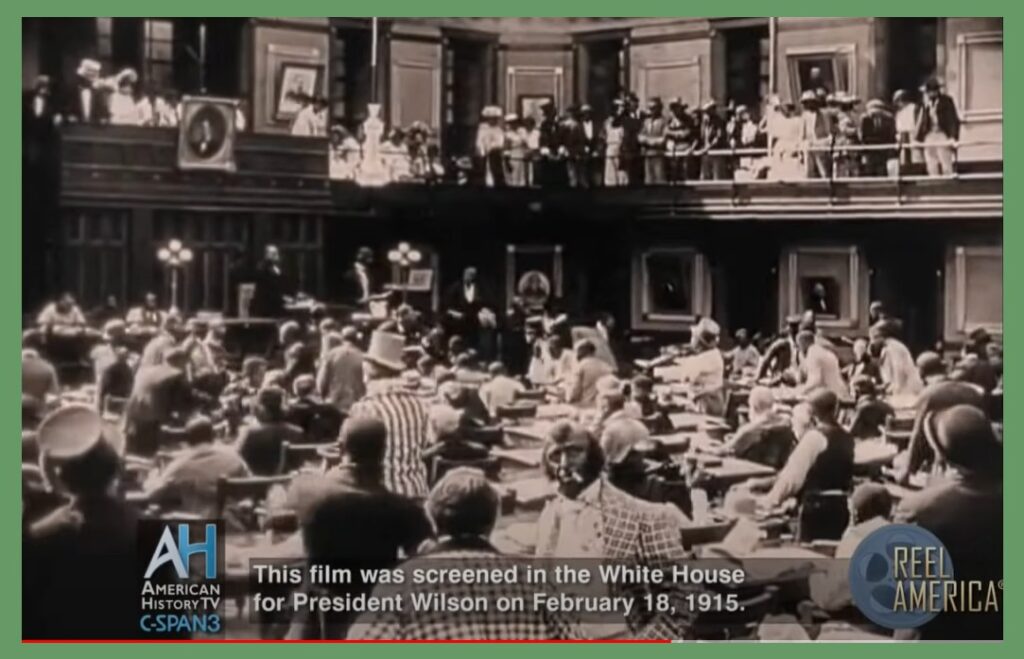
Added: “This film was screened in the White House for President Wilson on February 18, 1915.”
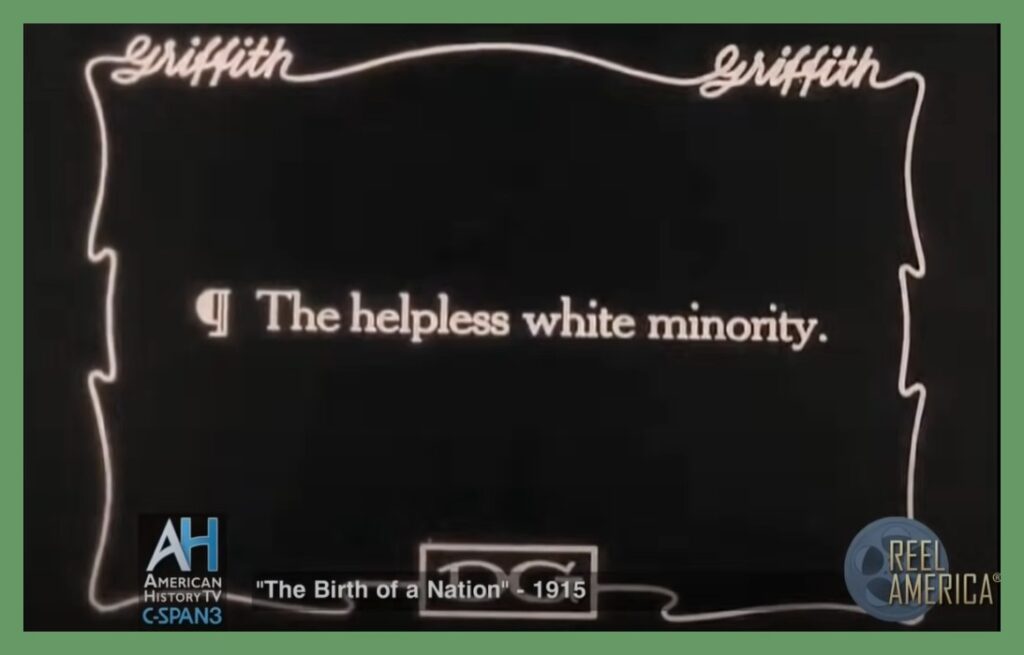
The helpless white minority.
White visitors in the gallery.
Passage of a bill, providing for the intermarriage of blacks and whites.
____________________________________________
A review of the film, The Birth of a Nation, as it appeared in the Harrisburg Telegraph, January 9, 1917:
AMUSEMENTS
Reconstruction Scenes in “The Birth of a Nation”
The scenes of Reconstruction days in the South shown in D. W. Griffith‘s spectacle, The Birth of a Nation, are of a great historical value. Some of those most interesting are those showing the sessions of the South Carolina Legislature when that body was controlled by negroes. In the House there were seventy-eight colored members with only forty-six whites, and of those thirty-two were carpetbaggers and scalawags. It was as if society was turned upside down. In place of the control of the old aristocratic statesmen, was the rule of the most ignorant democracy that mankind ever witnessed. For a time barbarism had overcome civilization by the force of numbers. The slave was rioting in the halls of his former masters.
James S. Pike, a prominent abolitionist, and therefore an unprejudiced eye-witness, wrote of those days in his valuable work, The Prostrate State: South Carolina Under Negro Government.
“The Governor is a South Carolina white man. The Lieutenant-Governor, the president of the Senate, the speaker of the House, the State Treasurer are all of the sable tint. The civilized and educated white race was underfoot, prostrate and powerless, and the black barbarian reigned in its stead.
“At some of the desks sit colored men, whose type it would be hard to find outside of Congo, whose costumes, visages, attitudes and expressions only bent the forecastle of a buccaneer.”
The result was the organization of the Ku Klux Klan and the redemption of the South from the horrors of misrule. This picture of history is one of the most vivid in The Birth of a Nation.
At the same time, General Ulysses S. Grant, who had made an official visit to South Carolina, wrote in his report to President Johnson.
“The presence of black troops, lately slaves, demoralizes labor. The late slave seemed imbued with the idea that the property of his late master belongs to him, or at least should have no protection from the colored soldier.”
_____________________________________________________
The screen captures presented in the post are from a YouTube video, the version produced by Reel America for C-Span 3, as indicated by the “watermark” on each capture.
The “book” by James S. Pike, referred to in the film criticism, was originally an 1873 series of articles by Pike for the a New York newspaper. It is available as a free download from Google Books.
Corrections and additional information should be added as comments to this post.
